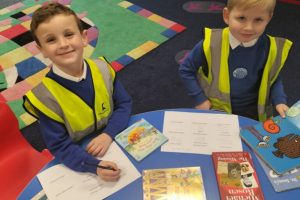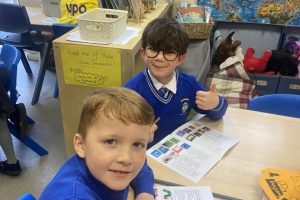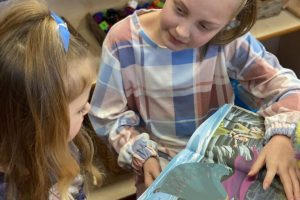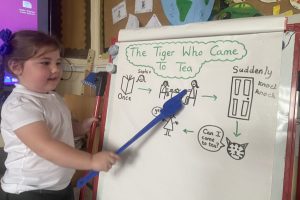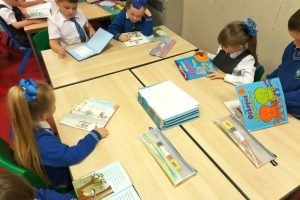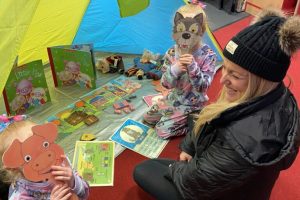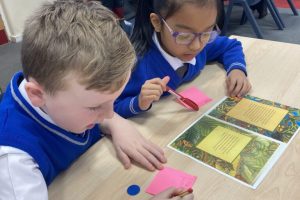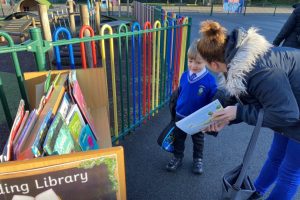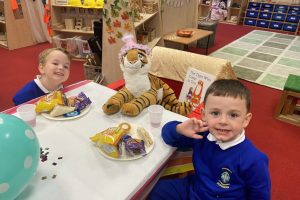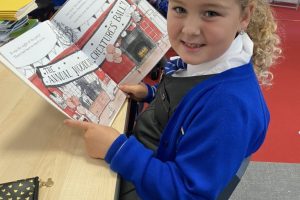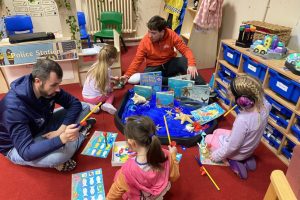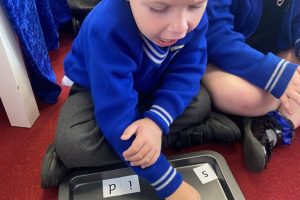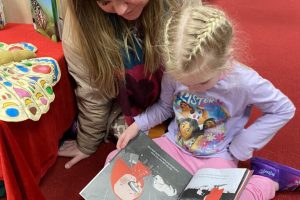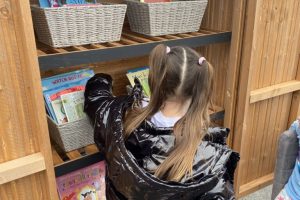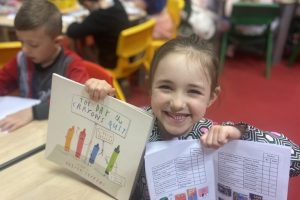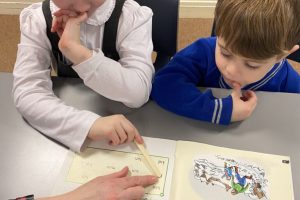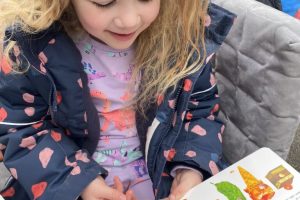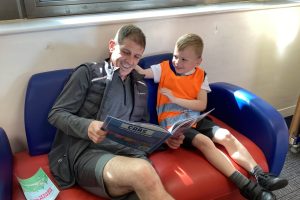“Reading is the gateway for children that makes all other learning possible.”
Barack Obama
At St Aloysius, we are passionate about developing enthusiastic and confident readers who can understand a wide range of texts across the curriculum and when reading for pleasure. Reading at St Aloysius is a core skill that underpins our whole curriculum. We know that learning to read, and reading to learn, is the foundation for future success. We recognise the importance of this academic skill and we want to ensure that every child leaves us by the end of Key Stage 2 as life-long learners through being competent readers.
Early Reading and Phonics
The teaching of reading at St Aloysius begins in our EYFS, with our children sharing books with adults and listening to many stories each day. The children access daily phonics lessons, as developing secure phonetic awareness and the ability to accurately segment and blend phonemes and graphemes is the first step towards fluency.
Read Write Inc is our scheme for the daily, focused teaching of systematic synthetic phonics in Reception and Key Stage 1. We send RWI Book Bag Books home, to ensure the children are reading books containing sounds they know and have been taught.
RWI for Parents
Examples of Reading at St Aloysius
Reading Beyond Phonics
As pupils progress through school, we use Treetops from Oxford Reading Tree as our primary scheme to continue to develop children’s reading skills. Reading books are graded by difficulty of reading levels known as Book Bands. Each Book Band has its own colour. Teachers will use their professional judgement and assessment to assign a book band level to a child. This level will dictate which set of books children can independently choose from. Our books are carefully organised into these levels making it easy for children to locate a book suitable to their interests. Once a pupil has chosen a book they will record their reading progress in a daily record and will have an opportunity to read with a member of staff on a regular basis. Teachers can then use this information to make sure that the texts that children are accessing are suitable. We also encourage all pupils to choose a ‘Reading for Pleasure’ book to take home from either their class library or the school library.
Wider Reading
Reading a wide variety of high-quality literature is central to our curriculum approach. Our whole school reading spine, linked to our Ready Steady Write curriculum, sets out a progression of classic and contemporary picture books, novels and poetry collections to be read for pleasure by the teacher with the whole class to ensure that all children are introduced to variety of inspiring and challenging literature, whatever their own current reading level.
Teaching Comprehension Skills
At St Aloysius we use VIPERS to teach comprehension skills from Y2 for pupils who have secure phonic knowledge through to Y6. VIPERS is an acronym to aid the recall of the 6 reading domains as part of the UK’s reading curriculum. They are the key areas which we feel children need to know and understand in order to improve their comprehension of texts.
VIPERS stands for
Vocabulary
Inference
Prediction
Explanation
Retrieval
Sequence (KS1) or Summarise (KS2)
The 6 domains focus on the comprehension aspect of reading and not the mechanics: decoding, fluency, prosody etc. VIPERS is not a reading scheme but rather a method of ensuring that teachers ask, and pupils are familiar with, a range of questions. They allow the teacher to ask targeted questions.
What does a VIPERS lesson look like?
VIPERS style reading lessons are taught for 4 x 30 minutes each week from Years 2-6. Through the use of VIPERS, children are explicitly taught the comprehension skills of reading as outlined in the National Curriculum.
During a typical session the teacher will share which VIPERS content domain/s the children will be focusing on for that session. Types of text given, including poetry, songs, picture books and short films, are appropriate to the age and key stage of the children. They can be a stand-alone VIPERS text, a text related to their class reader or the wider curriculum, supported by Literacy Shed Plus.
During these sessions teachers cover: fiction, non fiction and poetry.
Children read during these sessions in a variety of different ways. They may hear the teacher model fluent reading and then have time to reread the same extract themselves, they may read individually and feedback, work in groups, take turns in pairs or read aloud to their peers. You may see a number of these different strategies during one session.
Teachers plan 3-5 key questions each session based on the content domain being focused on. Children are encouraged to orally rehearse their answer before writing anything down. We use a maximum of 5 questions each session to ensure children have time to provide quality answers. At times children are given sentence stems and vocabulary that is expected to be used within their answer.
Recording and Assessment of VIPERS
We encourage children to orally talk through their answers and ensure it is the best they can give before writing anything down. We also acknowledge it is necessary for children to also be able to formally record an answer. Children can do this in a variety of different ways such as discussing the answer first with peers and/or an adult and then writing their best answer, working individually and then editing their answer accordingly after discussion.
During this reading session teachers focus on specific children during the session, this may mean hearing them read individually whilst others are reading independently, in pairs or groups, discussing answers with those children and working one to one or within a group with them during a session whilst the others form an answer independently.
Teachers can then assess these children based on NC expectations and how they are performing relating to the specific content domain every half term on specifically designed questions, suited to the class and the learning which has taken place.
What does reading at home look like?
All pupils are expected to read daily at home. We believe and research shows that reading regularly at home has immeasurable benefits to our children and their well being.
All pupils in Reception and KS1 are given a RWI Book Bag Book to read, alongside a book of their own choice.
Pupils in KS2 choose their own scheme book from a band suited to their reading ability and may also bring home a reading for pleasure book to read with a family member or independently.
Our school provides each child with a home reading diary to record their reading and progress. We expect our pupils to read at least 5 times a week at home and actively encourage parental involvement to support their children. Ideal reading times are 10 minutes for KS1 and 20 minutes for KS2 pupils every day!
Children who do not read at home will be offered reading opportunities with adults in school. They will also take part in break time reading clubs, so that they do not fall behind their peers.
Reading Passports
Our St Aloysius Reading Passports feature over 100 suggested texts that the children should read by the time they leave St Aloysius. These can be read by the teacher in class, with a parent/carer at home or independently. Click on the links to view our passports.
Reading Plus
All pupils in Years 4-6 have access to Reading Plus, an online reading programme which pupils can access both in school and at home. This programme improves fluency, increases vocabulary and comprehension skills. Each pupil has their own login and you can access this learning platform by clicking on the link below.


